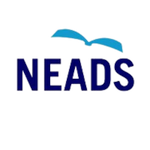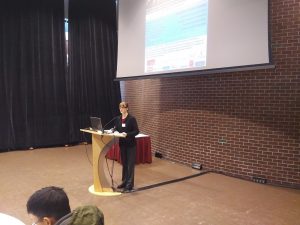Disclosure in the Workplace
Are you a student or a recent graduate with a disability transitioning from post-secondary to the world of work?
Do you have questions concerning how, when, and to whom to share information about your disability with?
If so, you likely have many questions regarding the disclosure process. To whom do I disclose? What and
how much do I disclose? How will disclosure impact
future opportunities? These are just some of the questions that this tip sheet will answer to help guide you through your disclosure process. The following tips are simply meant to offer some broad guidelines to aid in the process.
Tip #1: Disclosure is highly personalized. There is no right or wrong way to go about the disclosure process. It varies for everyone, based on disability, the career into which you are planning to enter and the type(s) of accommodation being sought. Some individuals with disabilities may choose not to disclose, which is perfectly acceptable. It is important to understand the pro’s and con’s of the choice to disclose (or not) – if you feel comfortable doing so, talking the choice over with people you trust (friends, family, peers) would be beneficial. You must do what is right for you and your journey into the world of work!
Tip #2: There are pros and cons to disclosure. Especially once you have left post-secondary and are now navigating a different environment, it is natural for you to be concerned about the impact on your credibility that disclosure may have. The following highlights some of the benefits to proactive disclosure in one’s employment journey. These are applicable across various career paths, and are particularly important as you consider when and how to disclose.
Disclosure:
- Promotes openness and trust
- Facilitates accommodation
- Educates the employer about accommodation
- Sets out an expectation of fair treatment
- Promotes open and honest communication
- Protects against risk of discrimination (Roberts, 2008).
There are individuals with disabilities who elect not to disclose. The following highlights some of these reasons:
- Risk of stigma
- Loss of privacy
- Loss of control of personal information
- Reactive rather than proactive
- No knowledge or understanding of disability or needs
- No accommodation
- Might not be necessary—work may not require accommodations

Tip #3: Be prepared for a very different environment in
employment, compared to your post-secondary education. First, depending upon your choice of career, you may not have the flexibility in scheduling your workload. Many places of employment will have set expectations surrounding structured hours. The employment arena involves a greater degree of independent work, and it will be important for you to lead your disclosure process, knowing who to talk to and what you should disclose.
As opposed to your post-secondary studies, where the Disability Service Office (DSO) acts as the go between students and faculty/departments, in the world of work,
the onus is on the student to undertake this process.
Tip #4: If you make the decision to disclose, deciding on to whom to disclose is an important step. Disclosure can take place to the HR director, your supervisor, or the hiring manager. You may have to disclose your accommodation needs to several individuals before the accommodations can be discussed by a team. Remember, not everyone needs to know everything, only disclose to those to whom you feel comfortable doing so.
Tip #5: It is your choice to disclose a need for accommodation (as opposed to disclosing a disability diagnosis). An often misunderstood fact is that when disclosing to an employer, you do not have to disclose an actual diagnosis, but rather instead a need for an accommodation. It is important to remember that there is a difference between disclosing a diagnosis and the need for an accommodation. What is necessary to get an accommodation in place is a statement of need, not a diagnosis. The need must be documented by a third party; it is not a request alone.
Tip #6: You must make the decision to disclose at a time that best works for you. There are many different options for how disclosure can take place. It is important for individuals with visible and invisible disabilities to understand the benefits and drawbacks to disclosure, and how the choice to disclose (or not) can impact your career. Disclosure of invisible disabilities poses unique implications (Johnson, 2006), in the form of labels that carry significant stereotypes and societal stigmatization. Individuals with visible disabilities must also decide on disclosure during the application process or prior to being invited for an interview. All individuals with disabilities face the questions of how much to disclose and disclosing a need for accommodation rather than their disability.
The following list (adapted from The 411 on Disability Disclosure: A Workbook for Youth with Disabilities) can be used by students and recent graduates to help guide the disclosure conversation.
- Provide general information about the specific disability/is requiring accommodation;
- Why the individual has chosen to disclose their disability (i.e., its impact on academic performance);
- The type of accommodations that have been effective in the past (in undergraduate courses);
- The type of accommodations a student anticipates needing in the graduate environment;
- How an individual’s disability can impact their job performance.
Adapted from “Disclosure in the Graduate Environment: A Tip Sheet for Students in Transition” by Chelsea E. Mohler, MSc, Emily M. Duffett, MA and Dr. Mahadeo A. Sukhai, Ph.D. (National Graduate Experience Taskforce, National Educational Association of Disabled Students, Ottawa, ON).
Background Reading
Johnson, A. (2006). Students with Disabilities in Postsecondary Education: Barriers to Success and Implications for Professionals. VISTAS Online. Retrieved from: http://counselingoutfitters.com/Johnson.htm
National Collaborative on Workforce and Disability. (2014). The 411 on Disability Disclosure: A Workbook for Youth with Disabilities. Retrieved from: http://www.ncwd-youth.info/411-on-disability-disclosure
Roberts, B. (2014). The disclosure question: a matrix for decision-making. Communique, Fall edition [pg. # tba]: Canadian Association of College and University Student Services, Montreal
Sukhai, M, Mohler, C, Doyle, T, Carson, E, Neider, C, Levy-Pinto, D, Duffett , E, and Smith, F. (2014). Creating an accessible science laboratory environment for students with disabilities: Council of Ontario Universities. Retrieved from: http://www.accessiblecampus.ca/educators/accessible-science-laboratories/
For a version of this document in Adobe PDF, please click below:
Disclosure in the Workplace
For a copy of Adobe PDF reader, please click below:
https://get.adobe.com/reader/

